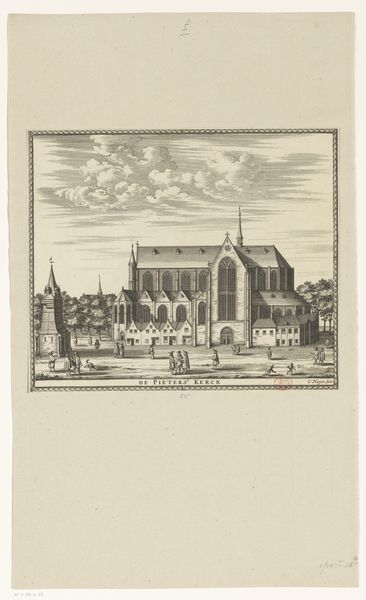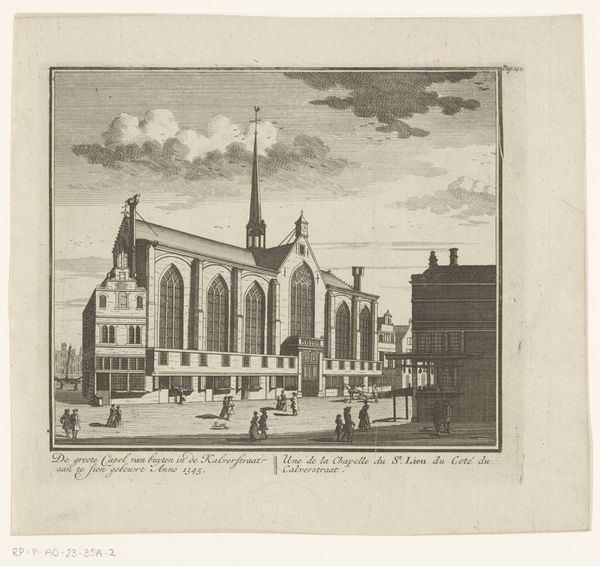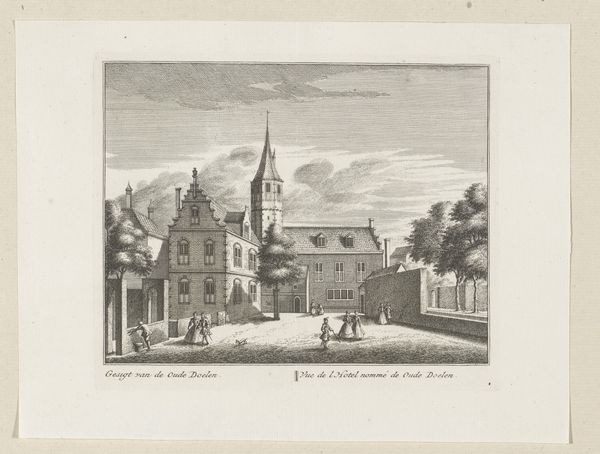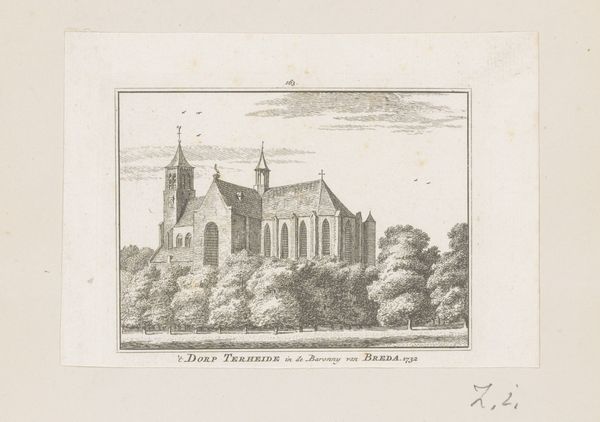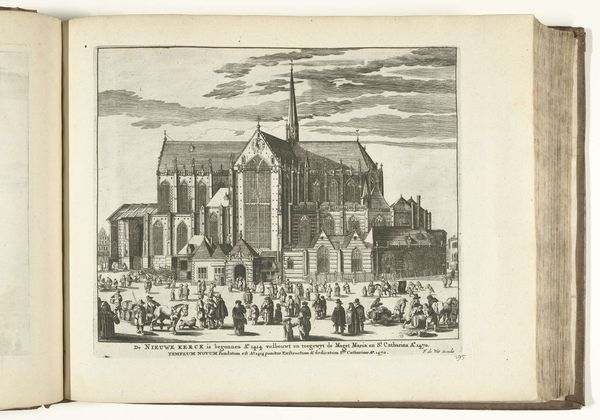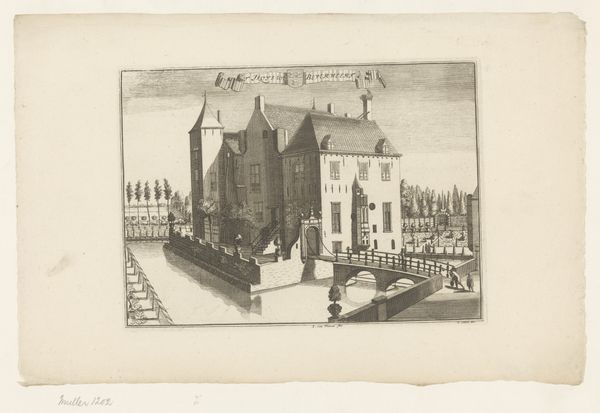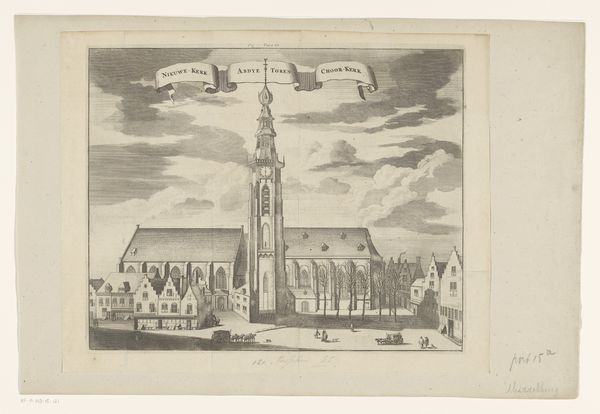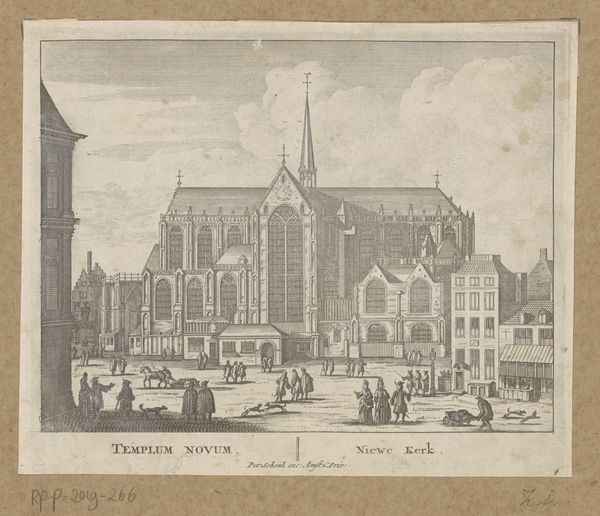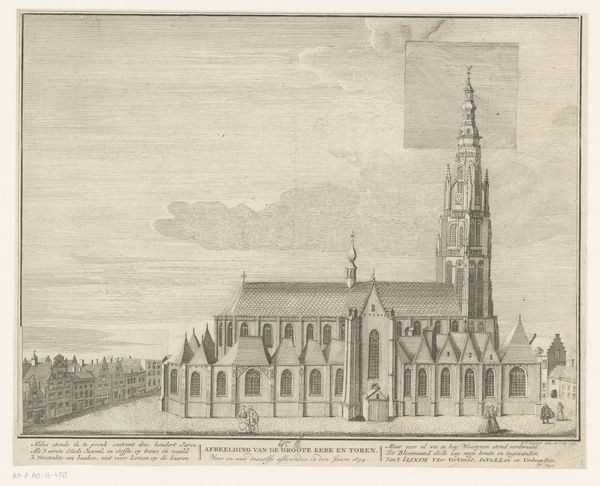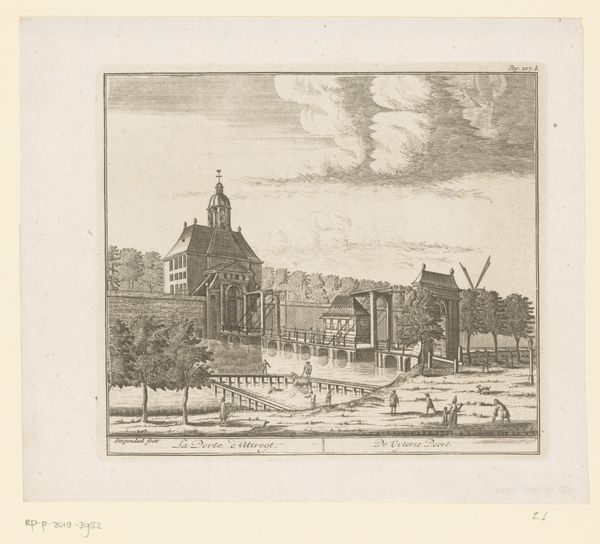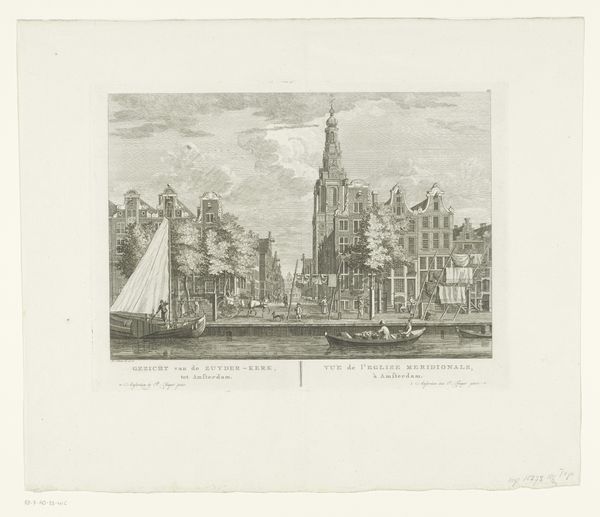
drawing, print, etching, paper, architecture
#
drawing
#
dutch-golden-age
# print
#
etching
#
perspective
#
paper
#
cityscape
#
architecture
#
realism
Dimensions: height 383 mm, width 496 mm
Copyright: Rijks Museum: Open Domain
Editor: This etching by Claes Jansz. Visscher, titled "View of the New Church in Amsterdam," dating from sometime between 1612 and 1648, is really interesting. There's a large crowd converging on the church, which creates such a focal point. What does this image suggest to you? Curator: It highlights the crucial role of the church within Amsterdam's socio-political fabric during the Dutch Golden Age. Amsterdam, newly independent and flourishing economically, projected power through its monumental architecture, such as the Nieuwe Kerk. What do you notice about the depiction of the figures? Editor: Well, they're tiny! It definitely emphasizes the scale of the building. Almost like they're processing into this civic…powerhouse? Curator: Exactly. These processions often had a public, civic function. The etching isn't just a depiction of a building; it shows how the physical space shaped social ritual and reinforces ideas of community. The artist, through the perspective and the placement of the crowd, positions the Church as an important center of community life, visually establishing its public role and authority in Amsterdam. How might viewers in the 17th century have interpreted this image? Editor: They probably would've immediately understood its symbolic significance— the church wasn't just a religious space. It was entwined with their identity and the city's identity. I hadn’t really thought about cityscapes holding so much meaning. Curator: Precisely. Understanding art within its historical and social context truly enriches our appreciation. Seeing the political messages within landscapes changes how we experience it, doesn't it?
Comments
No comments
Be the first to comment and join the conversation on the ultimate creative platform.

